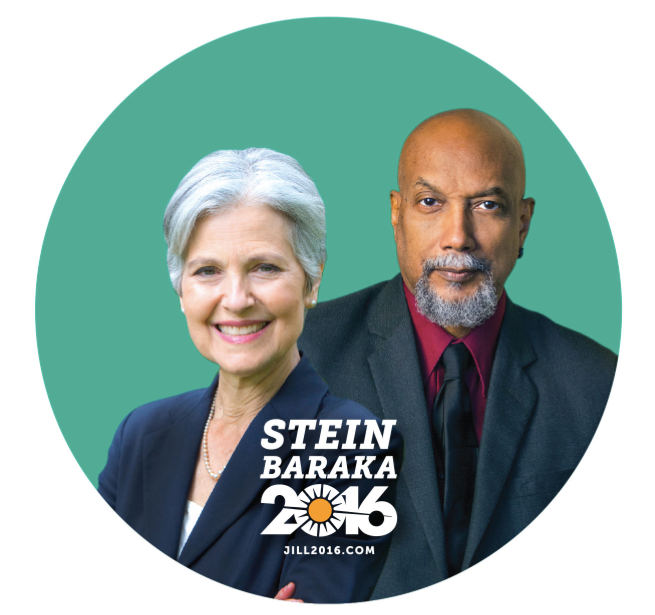
Congratulations, Jill Stein. You did it. A lot of people threw a lot of criticism your way, but you wore it all, and now you have your reward:
You have put the U.S. Green Party in a position to potentially have a decisive impact on the outcome of this election.
Real Clear Politics has you running at 2.1 percent nationally, with a national spread between Trump and Clinton of 2.3 percent. In Pennsylvania, they have you at 1.8 percent, with Clinton leading Trump by 2.6 percent. In New Hampshire, you’re sitting on 2 percent, with Trump leading Clinton by 1.6 percent. This is increasingly looking like it will be a close election. A couple of percentage points in a couple of key states could really, really matter.
So, let’s talk about the end game.
As things currently stand, there’s only two ways this will play out. Either Donald Trump will win on Tuesday, in which case the Greens will be ruthlessly scapegoated by Democrats and openly ridiculed by a Trump administration; or else Hillary Clinton will win, in which case Democrats will have less reason to hate the Greens but no reason to pay them any attention. It will be back to the wilderness, and the long, slow grind of building a credible third party out of an organization currently dismissed as irrelevant by ― well ― 97.9 percent of America.
There is, however, a third option.
Consider, just for a moment, what would happen if ― in these heady final days of the campaign, as Democratic fear of a possible Trump victory reaches fever pitch ― you told all your supporters in swing states like Pennsylvania and New Hampshire to throw their support to Hillary Clinton. Imagine if your support in those states dropped to zero, or close to zero, in the final returns, whereas your support in neighboring states like New York and Massachusetts held steady at 2 or 3 percent. Imagine Clinton carries Pennsylvania or New Hampshire by 1.5 percent.
Jill Stein, how would you like to spend the next for years reminding everyone that the Green Party handed the 2016 election to Hillary Clinton?
How would you like to threaten to remove that support in 2020, unless the Clinton Administration increased America’s emission reduction pledge under the Paris Agreement from 26-28 percent to 40 percent over the same time period?
How would you like to build the Green Party into a small but fiercely committed constituency of radical environmentalists with the power to decide who wins U.S. Presidential elections?
Look, I get it. The two party system stinks. The kinds of changes we need to make in order to save our planet from climate catastrophe are vastly more radical than the current American political system allows for. We need to find ways to massively increase the political power of the environmental movement. And as you have quite rightly pointed out, no party gets to “own” voters; the support of the electorate must be earned, not assumed.
But here’s the thing: earning support doesn’t just mean having good principles and good policies. It means having good strategy, too. And for a party that is dedicated to smashing the two-party system in America, the American Green Party displays a worrying lack of the kind strategic thinking that is the sine qua non of successful minor parties in multi-party systems. As someone who grew up under a mixed-member proportional parliamentary system in New Zealand, let me tell you: minor parties can win substantial policy concessions from major parties, but only when they can position themselves as kingmakers – or queenmakers, as the case may be.
Accepting that either Donald Trump or Hillary Clinton will be the next president ― and trying to work, within that constraint, to maximize the political power of the U.S. Green Party ― is not capitulation to anything, except simple political reality. Accepting that Donald Trump and Hillary Clinton are not equivalently dangerous threats to the long term sustainability of life on this planet is not capitulation, either. And a strategy that seeks to do everything possible to keep Donald Trump out of the White House, while simultaneously demonstrating to America and the world that the U.S. Green Party is a disciplined and savvy organization, is simply a better strategy than one that openly contemplates helping Donald Trump become the next president, along with the fearsome opprobrium that would bring.
If it happens, of course, a Trump victory might not technically be the Greens’ fault; the final numbers may be such that even with Green support, Clinton would have lost. But few will see it like that, and rightly so. Elections are fundamentally uncertain enterprises. Parties can and should be judged for the positions they take in the face of that uncertainty. Pursuing a strategy that includes even the possibility that the Green Party would be Trump’s kingmaker is, environmentally speaking, unforgivable.
Why, on Earth, would you take the risk?
